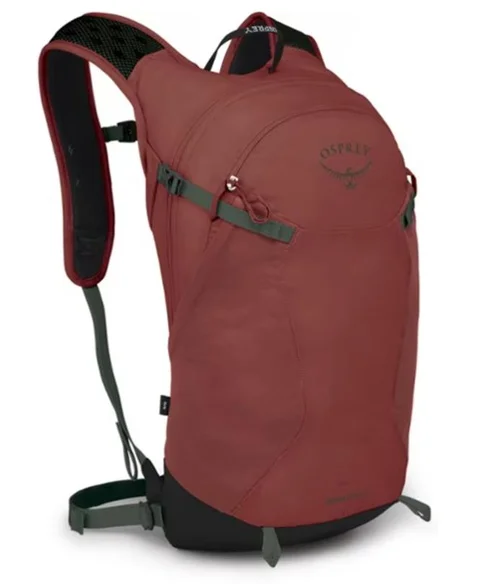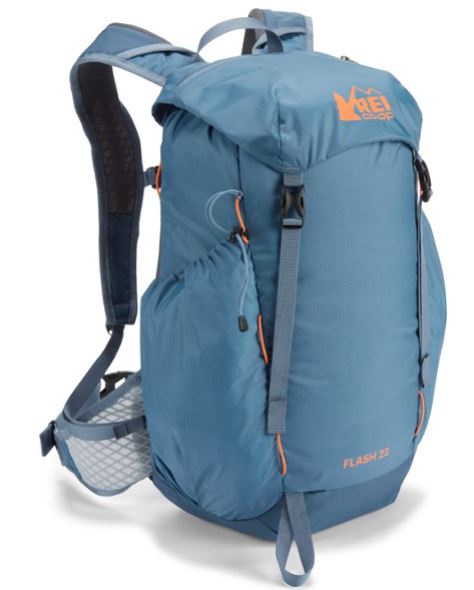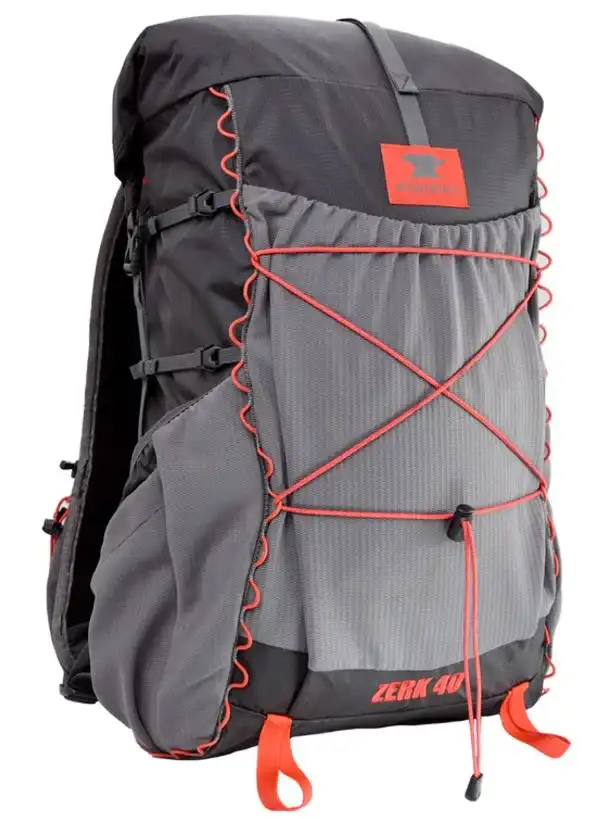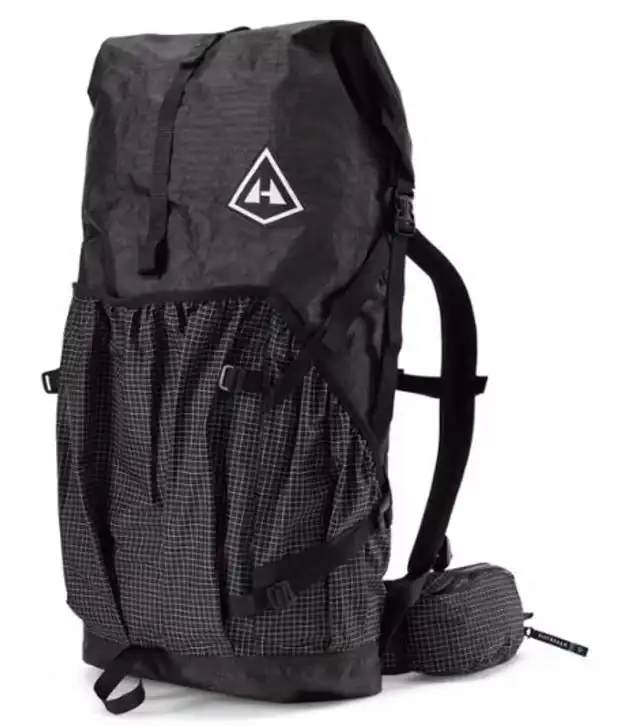There are many reasons why you would want to have a framed hiking backpack, and they are easily understandable. But there are also a few reasons why some people rather choose frameless packs.
Here are some possible reasons for choosing frameless hiking backpacks:
- Body shape not suitable for a framed design.
- When you want to have your hips free for a wide range of movements.
- When you use a climbing harness.
- When you do not want to have a hip belt.
- When you carry a small day pack with not much weight.
- Frameless packs may be more affordable.
- Frameless packs may be lighter.
There may be more reasons, but in any case, those presented in the list are discussed below in the text. But did you know that there are hiking backpacks with a removable frame?

First thing first, what is an unframed or frameless hiking backpack?
So this is a type without any rigid structure that would give a shape to the pack or make it self-supporting. In such packs, the load itself is supposed to provide support and shape to the pack.
This also implies that loading a frameless pack may be trickier than loading a framed pack. The pack is supposed to adapt to your back shape, but this may be difficult if there are some items inside that are wrongly positioned and they poke into your back.
For such reasons, some people put a sleeping pad inside so that it gives a bit of support and cushion. Many of these issues are absent with framed packs.
But let’s now explain the reasons for using frameless packs mentioned in the list above.
Possible reasons for using a frameless hiking backpack
1. Body shape not suitable for a framed backpack design
I know for sure that there are people who claim that they have a back shaped so that it does not fit a pack with a frame. My guess is that some of them have not experimented enough with framed packs to find the best fit.
The reason for saying this is the following. My very first framed pack, which was an external frame pack, was indeed bruising my spine, and it did not feel comfortable at all. It had a horizontal bar that was in the middle of my back, and whenever I was in situations to bend forward, it would hurt me.
This was so with that particular pack and with none other ever. Nowadays, all my hiking packs have a frame, but they are mainly with an internal frame.
But in any case, I would not argue with such users. If they are convinced that a framed pack is not a choice for them, then this is it, and this should be taken as a fact.
2. When you want to have your hips free for a wide range of movements
This may be in situations of scrambling and/or when using a hiking pack with a narrow strap instead of a proper hip belt. Such a strap is then in place mainly to limit the pack bouncing or moving sidewise on your back.
The pack below, the Osprey Sportlite 15 pack is an excellent and very popular example of such packs. This brand has them more, have a look at REI.

On the other hand, if a hiking pack has no true hip belt, then the frame is almost pointless in any case.
3. When you use a climbing harness
As you know, a climbing harness has its own hip belt where you may have lots of climbing items attached. In the simplest case this can be only a ferrata Y-shaped lanyard.
This can interfere with the pack’s hip belt which, on the other hand, is present because the pack has a frame; these two elements go together.
Obviously, if you are at places where you need a climbing harness, this is more important than the pack’s harness. So it is natural that you prioritize even if you are not against the backpack frame.
Related to this, there are clever backpacks designs where you can remove the hip belt when necessary. My Mammut Lithium 40 pack is with a removable hip belt, and this makes it a versatile and technical hiking and climbing backpack.
4. When you do not want to have a hip belt on your hiking pack
Without asking why, but indeed if for any reason you do not want a hip belt, then having a frame makes no much sense.
As already pointed out, a frame and a hip belt work together so that the weight is transferred from the shoulders to the hips.
5. When you carry a small day pack with not much weight
My packs that I use in daily life do not have a hip belt and they are also frameless.
The point is, when the pack is light enough, there is no need for a frame and for a hip belt. Such a pack is frequently only with a few items inside. It is flexible, it does not need to have a contour and shape, and therefore it fits wherever I put it.
This all holds for small hiking packs as well. Having a frame (and a hip belt) would only mean extra weight.
6. Frameless hiking packs may be more affordable
I guess this is easily understandable, there is less material used in their construction and less technology required for the frame, stays, and a solid panel. Frameless packs are normally much simpler and this is what makes them less expensive.
In framed packs sometimes these mentioned elements are removable and this may imply extra zippers and Velcro tabs. So quite generally, more working hours are needed to make framed packs.
7. Frameless hiking packs may be lighter
Do you know that many top-quality packs with breathable trampoline style tensioned mesh have a steel frame? Sometimes there are also central stays and HDPE panels.
As I pointed out a few times already, such framed packs normally always include a padded hip belt because weight is transferred to the hips. So this is a big addition to the overall weight.
So, it is easy to understand why frameless packs are usually lighter, but not always of course.
Examples of frameless hiking backpacks
There are many examples among day packs, you have already seen the Osprey’s pack above, and they have it in a few different volume capacities.
One more great example is this REI Co-op Flash 22 Pack shown in the picture. It weighs only 400 grams. So it is ultralight, but it is also ultra small.
As always, it is best to check volume to weight ratio if you want to properly rate the pack by its weight. Here, this is 55 liters/kg.

As for larger frameless packs, you might want to check the Mountainsmith Zerk 40 which is an ultralight pack. It weighs 1 lb 13 oz (822 g), so its volume/weight ratio is 49 liters/kg.

I must say that it looks very cool to me. It is also very functional and versatile. Observe those two daisy chains on the front/sides of the pack. With some extra cords, you can attach lots of stuff from outside.
Note that you can find also on Amazon, and they have a 25-liters version as well. You can see it in this video:
Hiking backpacks with a removable frame
There are indeed backpacks with a removable frame, and a removable back panel as well. I would describe them as a more versatile option than frameless packs. One great example is the Black Diamond Beta Light UL 45 pack shown in the picture.

Its frame consists of dual aluminum stays, which can be removed to further lighten the pack. The weight of the pack is 1.96 lb (890 g), but its stripped weight (no hipbelt, stays, foam) is only 1.15 lb (521 g).
In other words, its nominal volume/weight ratio is 51 liter/kg. But it can become 86 liters/kg when the mentioned elements are removed.
There are more examples of that type. You might want to check the Hyperlite Mountain Gear 3400 Southwest pack which offers very similar features:

Now, why would you want a removable frame?
No doubt, all the reasons mentioned above regarding the purpose of frameless packs may apply here too.
In addition, this feature is particularly useful for hikers who want to adapt their pack’s weight and structure based on the load they’re carrying.
Summary
So you have seen it all, there are some advantages of frameless hiking packs and there may be good reasons for using them. Their disadvantages are also numerous, but this is not the central question discussed here.
In spite of possible advantages, frameless backpacks are less suitable for heavy loads as they may compromise comfort and weight distribution. But in general, choosing a frameless pack depends on the nature of the hike and the user’s priorities.
Let me know in the comment box if you think that I have missed mentioning something important.
This site is all about information regarding outdoors, so bookmark it and keep as a reference, you have new texts added here all the time.
Subscribe to my weakly newsletter and stay informed, the subscription form is given below. Thank you for reading and have a nice day.
Leave a Reply